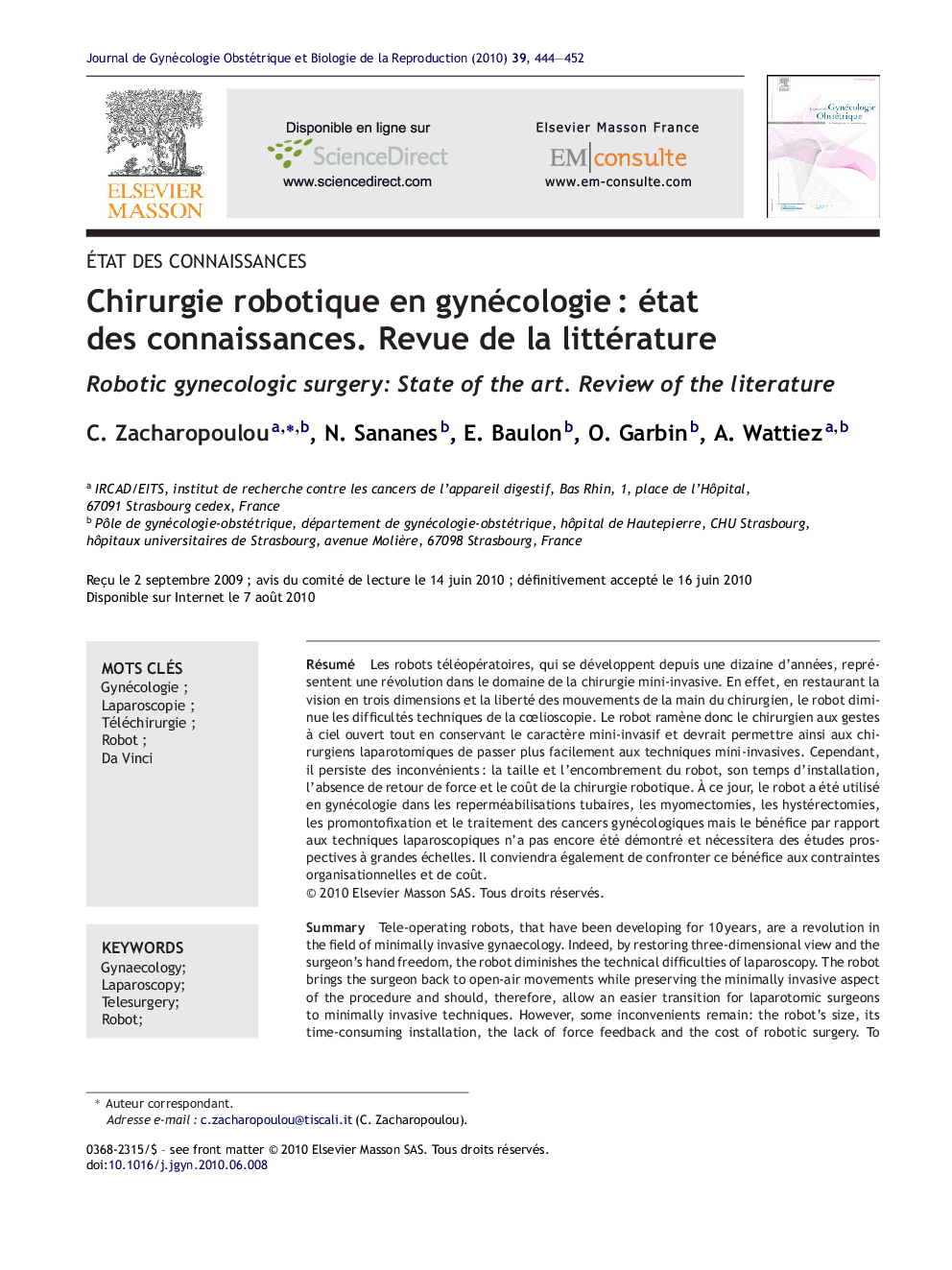| Article ID | Journal | Published Year | Pages | File Type |
|---|---|---|---|---|
| 3273414 | Journal de Gynécologie Obstétrique et Biologie de la Reproduction | 2010 | 9 Pages |
Abstract
Tele-operating robots, that have been developing for 10Â years, are a revolution in the field of minimally invasive gynaecology. Indeed, by restoring three-dimensional view and the surgeon's hand freedom, the robot diminishes the technical difficulties of laparoscopy. The robot brings the surgeon back to open-air movements while preserving the minimally invasive aspect of the procedure and should, therefore, allow an easier transition for laparotomic surgeons to minimally invasive techniques. However, some inconvenients remain: the robot's size, its time-consuming installation, the lack of force feedback and the cost of robotic surgery. To this day, the robot was used in gynaecology for tubal reversal, myomectomies, hysterectomies, promontofixations and the treatment of gynaecological cancers, but the benefits compared to laparoscopic techniques have not yet been demonstrated and will require large scale prospective studies. These benefits will also have to be weighed up to the cost and organizational constraints.
Keywords
Related Topics
Health Sciences
Medicine and Dentistry
Endocrinology, Diabetes and Metabolism
Authors
C. Zacharopoulou, N. Sananes, E. Baulon, O. Garbin, A. Wattiez,
